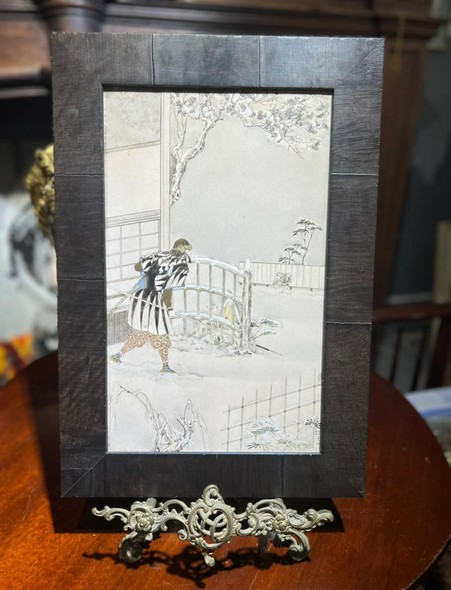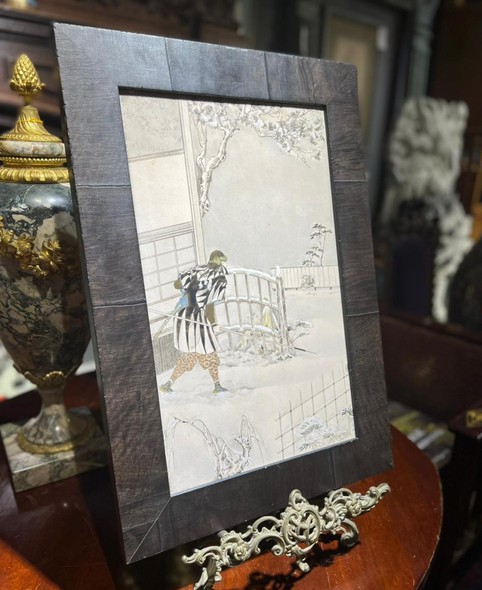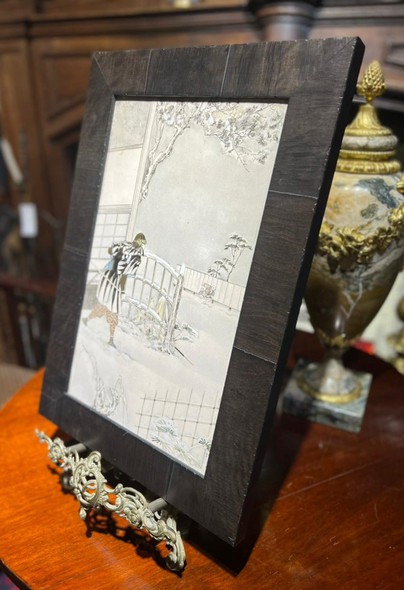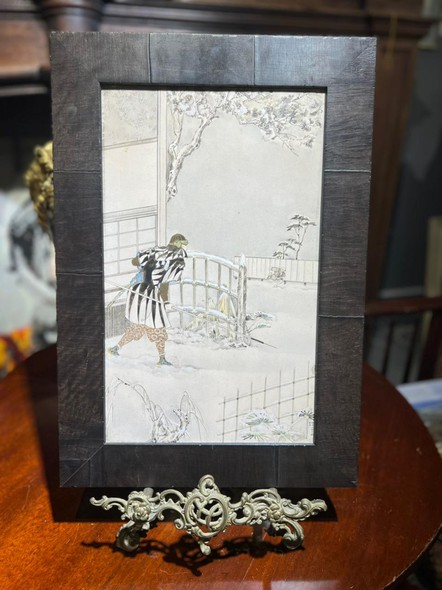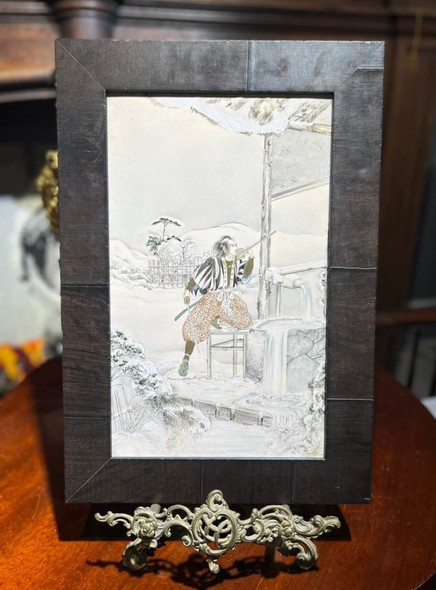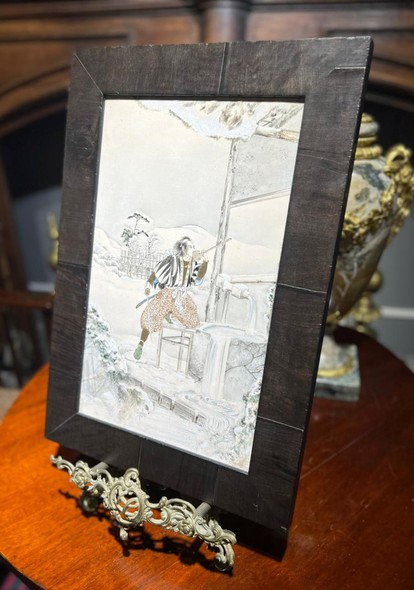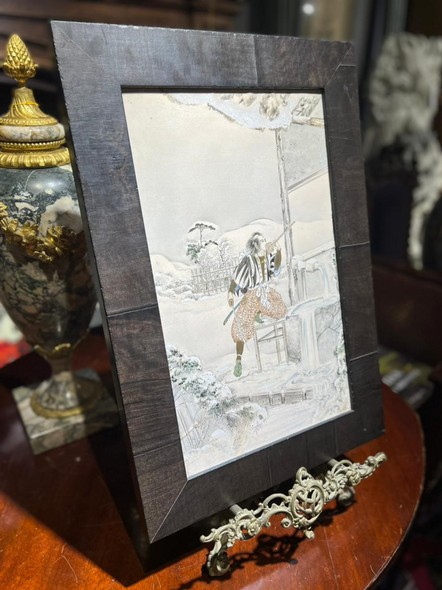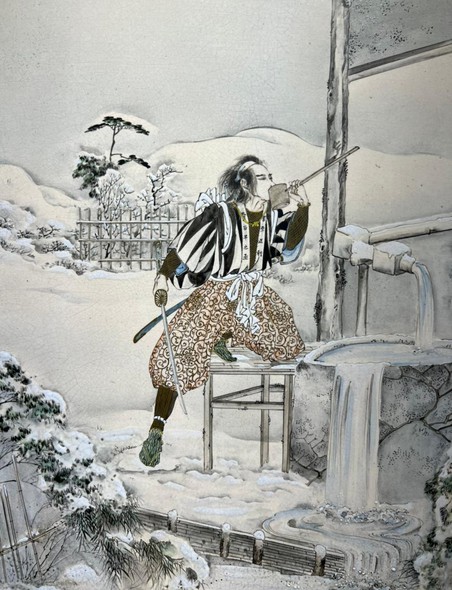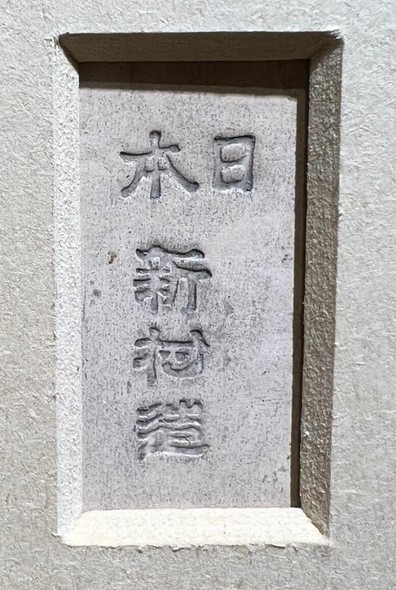Antique pair panels "Samurai", Japan
Antique pair panels "Samurai". Wood, ceramics, painting. Japan, XX centuryThere were wars, there were samurai, there was honor, there was an era. When the word “samurai” is heard, an image of the most worthy of the most worthy person arises in thoughts. And so it was. Legends were made about them, about their fearlessness, will, devotion, who fought with the enemy with a sword, "keeping the spirit of the owner in itself." "Samurai" in translation means "a person who serves."The military class of the samurai appeared in 646, as a result of the Taika reforms. The strengthening of the samurai occurred at the beginning of the 10th century, when Emperor Kammu turned to the regional clans for support in the war against the Ainu.In the X-XI centuries. in the process of "misunderstanding" between the feudal lords, influential clans appeared that had military detachments of professional warriors who were not officially in the service of the emperor. The feudal lords needed protection, which was the samurai. In the same period, the code of "bow and horse" was born, which later became "Bushido", "Way of the Warrior".The golden age of the samurai was the period from the first shogun to the Onin civil war (1467-1477). Further, in Japan, a period of many internecine wars began, in which the samurai actively participated. In the middle of the XVI century. There was a feeling that the empire, shaken by civil strife, would soon fall apart, but the prince of the island of Honshu was able to unite the state. In 1598, it turned out to establish autocracy. The ruler was Tokugawa Ieyasu, who settled in Edo (today's Tokyo), and became the founder of the Tokugawa shogunate, who ruled for more than 250 years (the Edo era).The highest paid samurai were hatamoto - vassals of the shogun. The bulk of the samurai did not own the land, but they had a lot of privileges, salaries. Tokugawa law allowed a samurai to kill a commoner who behaved inappropriately on the spot without consequences. The belief that all samurai lived richly is not true. Under the Tokugawa, there were poor samurai who cultivated the land to feed their families.Perhaps the most important thing to say about the samurai is that they were instilled with indifference to death, fear, physical pain, they were "servants of the cult of respect for elders and loyalty to the master." The mentor and the family of the young man who embarked on the path of a warrior cultivated endurance, patience, and courage in him. Future warriors were sent to the cemetery alone, young men attended public executions, examined dead bodies, and future samurai had to leave a special mark that they "were here." They did hard work, went barefoot in winter. Samurai were an educated class. The Bushido code says that a warrior must work on himself in any way. Samurai did not shy away from poetry, painting, ikebana, calligraphy, and tea ceremonies.Will, self-control, composure and reason - such were the samurai. The worst thing for a samurai was the loss of honor, worse than death was shame.According to the code, the samurai could not disobey the order of the master, whether it was an order to commit suicide or go with 10 people against a thousandth army. The most terrible ritual that comes to mind when it comes to samurai is hara-kiri or seppuku. A samurai had to commit suicide if he was captured or unable to follow the bushido code. Solemn bathing, food, the last poem and a faithful comrade nearby to cut off the head and end the torment of the one who committed suicide.The appearance of the samurai did not change, according to many sources. They were wide trousers, hair gathered in a knot, a forehead shaved bald. The samurai sword (first chokuto, then katana) kept his soul, was considered the most important attribute of the warrior caste.
Antique pair panels "Samurai", Japan
- Артикул
- 02_2106
- Available:
- Sold
- In section:
- furniture and décor in oriental style, decor items, miscellaneous, decor, wall decoration, other, gifts, for leaders, for men, vip gifts, for women
Обозначение размеров:
- H – высота,
- W – ширина,
- D – глубина,
- d – диаметр
- Style:
- Oriental
- Period:
- XXth century



